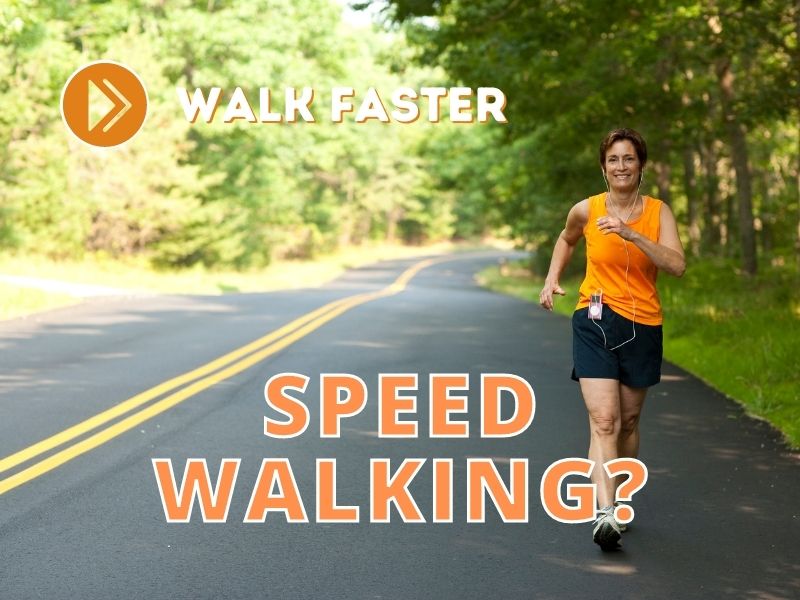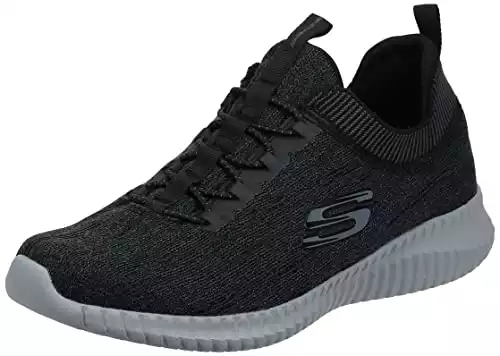When I go walking, my heartbeat is slightly raised but is about the same as when I am doing almost any other passive activity. It’s only when I walk fast that my heartbeats start to beat faster than normal.
Speed walking is faster walking, which raises your heart to a moderate level. Speed walking is sometimes used interchangeably with Olympic Race Walking and power walking because these are both fast types of walking styles.
Speed walking can be a form of exercise that can be just as helpful as the gym. Your heart and body will respond to this low-impact exercise by giving you many benefits. We’ll discuss how to speed walk, the benefits, and what you need to know to better understand speed walking.
Speed Walking Explained
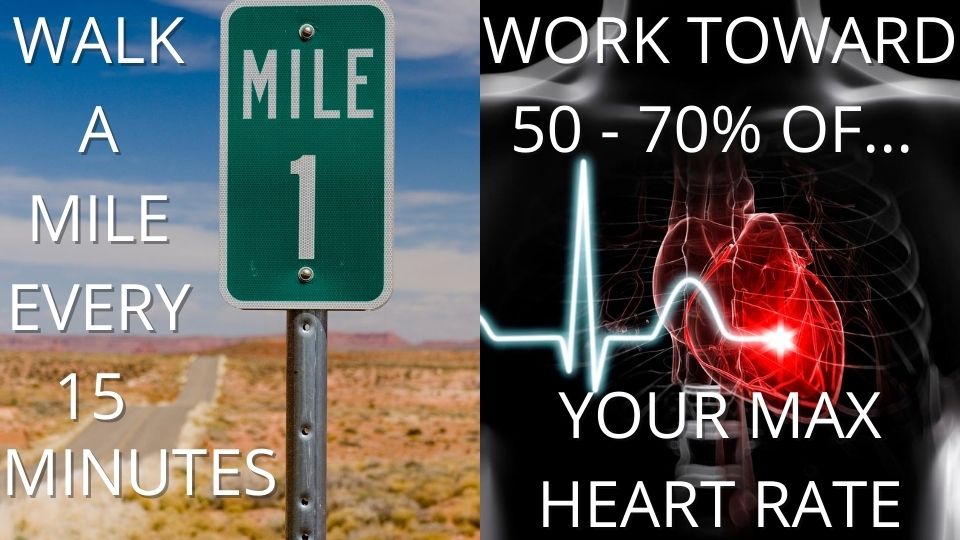
Speed walking is basically walking faster, so you’re getting through a mile in about 15 minutes or so for the average person. Most people who are walking faster keep their normal walking style and make it faster. However, to maximize efficiency, you want to move your arms and legs correctly.
Speeding how you normally walk may leave you tired quickly and can also lead to injury. Later, we’ll review the two techniques that are most helpful for walking fast.
To determine if you are walking fast, a smartwatch or phone can help. Otherwise, notice how your heartbeat increases and your breathing gets more rapid. Normally, the average person walks at 3.1 mph. (wikipedia.org) So you should try for 4 mph to get your heartbeat up. This will get you 1 mile every 15 minutes.
Walking fast can be considered a moderate type of exercise, but only if it’s a sustained raised heartbeat over time. The American Heart Association recommends 150 minutes of exercise a week or about 22 minutes of fast walking each day.
Once you feel like you can still talk but need to take breaths between your sentences, that is probably the right speed, if your heart has accelerated to “50 to 70 percent of” your maximum heart rate, then you are achieving moderate exercise. (betterhealth.vic.gov.au)
The reason many fast walkers want to speed walk is so they can maximize their health benefits and still have a low-impact workout. We’ll discuss these benefits in more detail later.
Whatever your goals are, during your speed walk, you can achieve them through different styles of walking fast. Let’s talk about what you need to know to get started.
Speed Walking Shoes
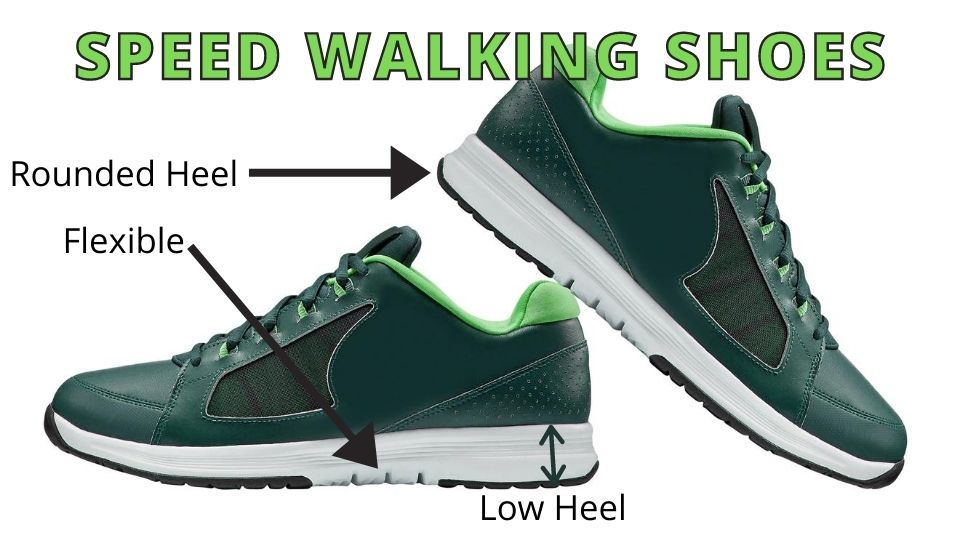
Most any kind of walking shoe should be fine if you’re just starting out, although some of the following characteristics will ensure you can speed walk more effectively.
- Get flexible shoes – This is very important for proper fast walking techniques.
- Get Zero drop or low heel-to-toe difference (Low drop) – If you see 0 mm for zero drop shoes or less than 4mm. This helps with natural foot-walking motion and may help prevent heel strikes.
- Comfort– Beginners may want to have more cushioning to help with comfort and joint impact, although this may limit flexibility.
- Correct support – Shoes have various levels of arch support and can also help with under and overpronation. Get the shoes that are best suited for your foot.
- Rolling Heel – Shoes with wide soles are good for stability but may be bad for fast walking. A narrow heel means you can land on your heel more accurately. Better yet, a heel that is curved/undercut a bit helps the foot roll the foot during fast walking.
- Light Weight – If you will be walking a lot, shoe weight makes a difference in energy levels.
You’ll want to have the right shoe that can land on your heel and roll to your toes to push off when walking fast. A flexible walking shoe with the specific qualities that you are looking for will aid you in walking fast for longer periods.
If you get a general walking shoe, it may already have many of these qualities, but after using it for a week, you may decide you need something more suited to your fast walking needs.
I like these Sketches for beginner fast walkers because they are comfortable, have a low heel drop, and the heel and toes are shaped so the foot can roll nicely. They are light at 8.8oz and people seem to like that they slip on.
It’s helpful to practice your fast walking technique before you decide to purchase new shoes. Your current shoes may work fine, but if they don’t, they can tell you a lot about what you don’t want and will need.
Going to a shoe store that specializes in running and walking shoes can be very helpful in getting the type of shoe that is best suited to your needs.
Speed/Power Walking Leg and Arm Movement
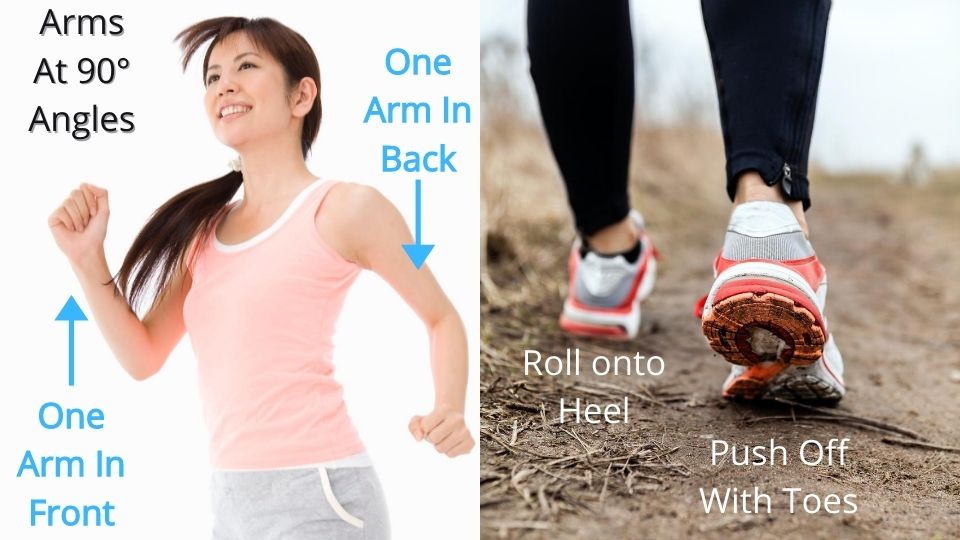
When learning to walk faster, you may naturally start to move your legs and arms faster. You’ll need to modify how you walk normally if you are to achieve fast walking for long periods, though.
Like running, faster walking requires you to have more balance between your upper and lower body. You will need to move your arms in conjunction with your legs.
The legs won’t bend as much as running, and you won’t need to lift your foot off the ground much. You will be extending your legs more by pushing off with your toes and landing on your heels.
In order to get your heartbeat going faster for a longer period, you need to make sure not to wear yourself out. Fully extending your legs as you push off of your toes and land on your heel will make your job much easier.
Instead of a bouncy motion that might occur as with running, you will work toward a smooth forward motion.
This may come naturally to you as you walk faster, but if you’re like me you’ll need some practice to make sure you are doing it right. I’m used to running and want to bend my knee, but fast walking requires a fairly straight leg for efficiency.
As you practice rolling your foot from the heel to toes in one easy motion, your walking will start to feel like less effort is needed.
You will be losing very little energy. Your large muscle groups will be using energy efficiently and your fine motor muscles may be a bit achy after your walk since you will be using them more than normal.
You can start off slow by swinging your arms the opposite of your feet as you take each step. Walk slowly and get the hang of swinging your arms and taking normal steps forward.
When fast walking, the goal is to move forward efficiently and take longer strides once you are ready to. That way, when you land on your heel, you won’t strike the ground hard, which could lead to problems later on.
You will have your legs mostly extended with a bit of a bend in your knees. It should be fairly comfortable and not like your overly exaggerating any movement.
Here Are Some Simple Steps to Begin Speed/Power Walking
- First, just walk as you normally would, with an emphasis on keeping your toes up a bit and landing on your heels as you roll your foot forward to your toes. Do this for a minute and see if the movement can come naturally to you.
- Next, continue to walk at a normal speed, but start to swing both your arms at a 90° angle as you walk. If your left foot is forward, your right hand is back, and vice versa. As you combine foot and arm movements, try to work toward making it feel like a natural motion. Take as much time as needed.
- Last, start to walk faster. You may naturally want to make longer strides forward and bend your knees if you’re used to running. So, take smaller strides at first, and after warming up, take longer strides as you get faster. Try to get into a rhythm, so your walking is smooth.
Try speed walking for about 5 minutes the first time. Wait a day and see how you feel. Try another 5-minute session in 2 days if you think you are ready.
Then, each week, you can increase the time by another 5 minutes and monitor how you feeling. Give yourself plenty of room for recovery, especially if you feel that your muscles hurt more than normal muscle discomfort.
Two Fast Walking Techniques
As mentioned before, speed walking is sometimes used interchangeably with power walking and Olympic Race Walking.
It’s important to use proper fast-walking techniques to reach the goals you are trying to achieve. It’s likely you’ll have much more efficiency to sustain for long periods if you walk with the right technique.
1. POWER WALKING TECHNIQUE
Officially, power walking was founded in 1990 and states that walkers must keep one foot on the ground at all times like race walking. The main differences are that in power walking, you can’t have “an exaggerated swivel to the hip,” and your “leading foot must be bent.” (wikipedia.org)
We’ve already discussed most of the techniques to get started with power walking. In this video, you can see how the feet roll from heel to toe. Watch how his hips naturally change height as his extended legs move forward in a somewhat straight line. As you try walking quickly, you’ll feel how your body shifts when you walk.
In this video, the walker shows us how to use proper foot placement when power walking.
2. OLYMPIC RACE WALKING TECHNIQUE
This type of competitive sport has been around since 1880, when it was a track and field event. Not until 1904 was it introduced to the Olympics.
For those who are already experienced with power walking and want to start walking even faster, about 5 mph or more, you can begin to try Olympic Race Walking.
Race walking is a sport that is done in the Olympics and walkers move really fast. Two rules all race walkers must follow are the following:
- Walkers need to keep one foot in contact with the ground at all times.
- The “supporting leg must straighten from the point of contact with the ground and remain straightened until the body passes directly over it.”(wikipedia.org)
Just like power walking, walkers move their arms and legs in unison to propel themselves forward. Watching this video will show some of the techniques that help race walkers engage in the sport properly.
Some of the key points to remember are:
- Keep arms at a 90° angle
- Swing your arms from the mid-chest to just behind your back.
- Keep the forward leg straight when landing on the heel
- Push off with the toe as you bend the back leg
- The inside edge of your feet should land on the left and right side of an imaginary line
Olympic race walking can be done at a slow pace for those just beginning, but it was meant for speed. Just remember to be safe and take any new sport slowly and get used to it over time.
General Fast Walking Tips
In this video, the walker demonstrates techniques that I feel are both power walking and Olympic-style race walking to increase his walking speed.
I think it’s a good idea to take more steps rather than longer strides. This way, you may receive less impact on your heel. That being said, if you can go fast and smooth, this will also greatly reduce the impact on your heel.
Fast Walking Warnings?
No type of exercise is 100% free of injury. Fast walking is prone to some injuries as well. One of the main injuries you might receive if your heel impact is too hard is a knee injury. Each time you strike your heel on the ground with an extended leg, you’re impacting the cartilage in your knee. This can also affect the hips and back.
Runners may not need to worry about heel strikes as much because they land more on the midsole and forefoot. How you place your foot on the ground will make a big difference. That’s why having good cushioning in your shoe and possibly replacing your insole with something that absorbs impacts better can help.
During any exercise that is high intensity, you need to give your body one or more days to rest that specific body part used. Speed walkers might want to work the upper body or do low-impact activities like swimming to let their legs recover.
Benefits of Speed Walking
Just like walking and running, speed walking has a lot of health benefits. As we mentioned before, walking fast increases your heart rate to the point that it is considered moderate exercise.
Consider some of the benefits below that you can receive through consistent moderate exercise, like speed walking.
- Moderate exercise can help your heart get stronger and improve your overall health. You’ll lower your risk of cardiovascular disease and lower your blood pressure.
- You will have stronger leg muscles and your bones will get stronger as well.
- Leaner Body – You can lose some weight if you are walking consistently every week.
- Fitness – 150 minutes of exercise is recommended by the American Heart Association, and speed walking can help you reach that goal.
- Consider that any type of exercise has psychological benefits that can improve your mood, and it can be helpful when it’s time to go to sleep because your body may feel more restful.
Final Thoughts
When we can speed up our walk to a moderate level, we are giving our bodies the exercise it need to maintain good health. As you practice good techniques when walking faster, you will reduce injury and be better able to maintain your fast walks for longer periods.
You will be using some muscles that you are not used to using, so taking it slow at the beginning is recommended. It’s good to mix up your exercise routine so you are not overusing any one body part, which may lead to injury. I hope you can enjoy all of your exercise experience, and if you are trying out speed walking, I think you might enjoy this sport.
Thanks for visiting Helpshoe.com
References
https://www.betterhealth.vic.gov.au/health/HealthyLiving/exercise-intensity
https://en.wikipedia.org/wiki/Walking
https://www.verywellfit.com/benefits-of-speed-walking-3436249
https://www.verywellfit.com/speed-walking-3435998
https://www.verywellfit.com/how-to-walk-faster-arm-motion-3432919
https://runrepeat.com/skechers-elite-flex-hartnell

